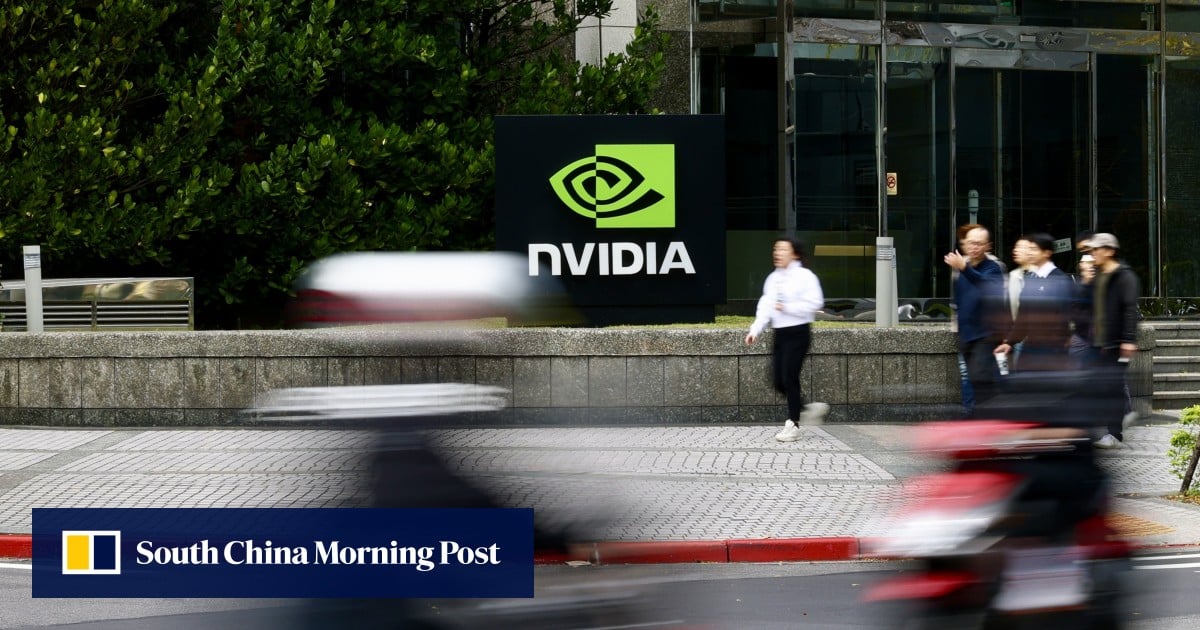Nvidia’s recent warning to developers about running its CUDA software, a programming toolkit, on third-party graphic processing units (GPUs) has exposed another weak link in China’s quest for chip self-sufficiency: its dependence on the US chip giant’s software.
CUDA is a computing platform developed by Nvidia, which allows its GPU users to make best use of its chips in artificial intelligence (AI) and other applications.
Intel and Advanced Micro Devices (AMD), the world’s leading developers of computer central processing units, have also supported an open-source software project that enables their GPUs to run on CUDA.
Nvidia recently added a warning to its end-user license agreement for CUDA 11.6, requesting developers not to run CUDA on third-party GPUs via “translation layers”- software that converts one set of codes into another – on non-Nvidia hardware systems. It was the first time Nvidia has included such an explicit warning in the downloaded version of CUDA, according to a report by Tom’s Hardware on Tuesday.
Nvidia sampling alternative AI chips to China as US restrictions take a toll
Nvidia sampling alternative AI chips to China as US restrictions take a toll
The move may potentially affect some Chinese GPU makers’ ability to use CUDA code in their hardware, according to several Chinese developers.
After Washington restricted exports of Nvidia’s advanced GPUs to China, Chinese GPU companies have been working to develop their own alternatives, relying on CUDA as one of the software tools to improve GPU performance.
Nvidia’s updated CUDA agreement comes as it is being touted as the world’s hottest company amid a global AI frenzy, with Big Tech firms and start-ups alike scrambling to get a hold of its GPUs. At the same time, Nvidia’s low-end GPUs face competition from rivals in China.
“CUDA plays a crucial role in Nvidia’s ecosystem, which helps it lock in its customer base,” said Su Lian Jye, chief analyst with research firm Omdia. “It has become a crucial tool for many AI developers … if the compatibility with CUDA was undermined, the costs of integrating codes will be so much higher.”
However, Chinese GPU firms said the immediate impact would be limited.
Moore Threads, a Chinese GPU start-up blacklisted by Washington last October, said in a statement on Tuesday that its home-grown GPU architecture MUSA, and developers using its MUSIFY tool kit, were not affected by the Nvidia change.
“Developers can be assured of using our software, which is not applicable to Nvidia’s … clauses,” the statement said.
A senior engineer at Nvidia China, who declined to be named, downplayed the move, saying it was “just a warning in the user agreement.” It was not an actual ban that “will cause disruptions to many projects”, he told the South China Morning Post.
Nvidia’s newly-tailored China chip to compete with rival Huawei product
Nvidia’s newly-tailored China chip to compete with rival Huawei product
Nvidia declined to comment on Wednesday.
Despite the progress being made by Chinese GPU start-ups, their shortcomings in software are proving a hurdle when trying to compete with foreign companies like Nvidia.
Many Chinese GPU companies have made their hardware more compatible with CUDA to win more market share by reducing software development costs for customers jumping to a new hardware platform.
Last December during its launch of the MTT S4000 GPU, Moore Threads said its home-grown AI training card can leverage the CUDA ecosystem to enable zero-cost migration of CUDA code to the MUSA platform.







